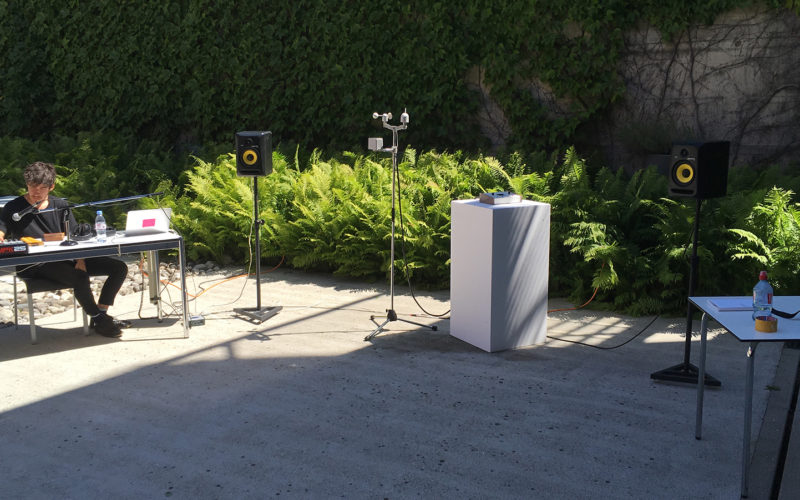This is Weather Thingy, a “Real-Time Climate Sound Controller.”
For this week’s Looking Outwards on Sound Art, I examined a work called “Weather Thingy” by Adrien Kaeser at ECAL’s Media and Interaction Design Unit. At first glance, the piece seems whimsical, fun, and even a bit weird. But upon further inspection, Kaeser’s work has a striking level of complexity that allows it to interact with its surrounding environment and produce sound and art.

At its most basic core, Weather Thingy is designed to convert weather signals into musical sound. Three climate sensors detect rain, precipitation, and wind speed and translate those into parameters using an interface equipped with a brightness sensor. Using Arduinos and other computational components, Kaesar fitted Weather Thingy with the ability to react to climate changes in real time with different types of sounds. This is one of the things that really stood out to me; most sound art reacts to sound and produces a visual effect, but Weather Thingy reacts to the climate and produces sound. In other words, the piece is a real-time, reactionary piece of art.
Kaesar mentions that he hopes Weather Thingy can serve as an inspiring tool to help musicians come up with song ideas. It seems that the sheer randomness of wind, precipitation, and climate can lead to some pretty incredible and unique sound effects. In reading about the mechanics of Weather Thingy that are mentioned in the article, I noticed a few clear connections to programming languages. The conversion of weather cues to parameters allows them to be called by Arduinos in Weather Thingy, essentially serving as a function that generates sound. It’s amazing what computational art can create with sound!
Sources:
![[OLD FALL 2019] 15-104 • Introduction to Computing for Creative Practice](wp-content/uploads/2020/08/stop-banner.png)